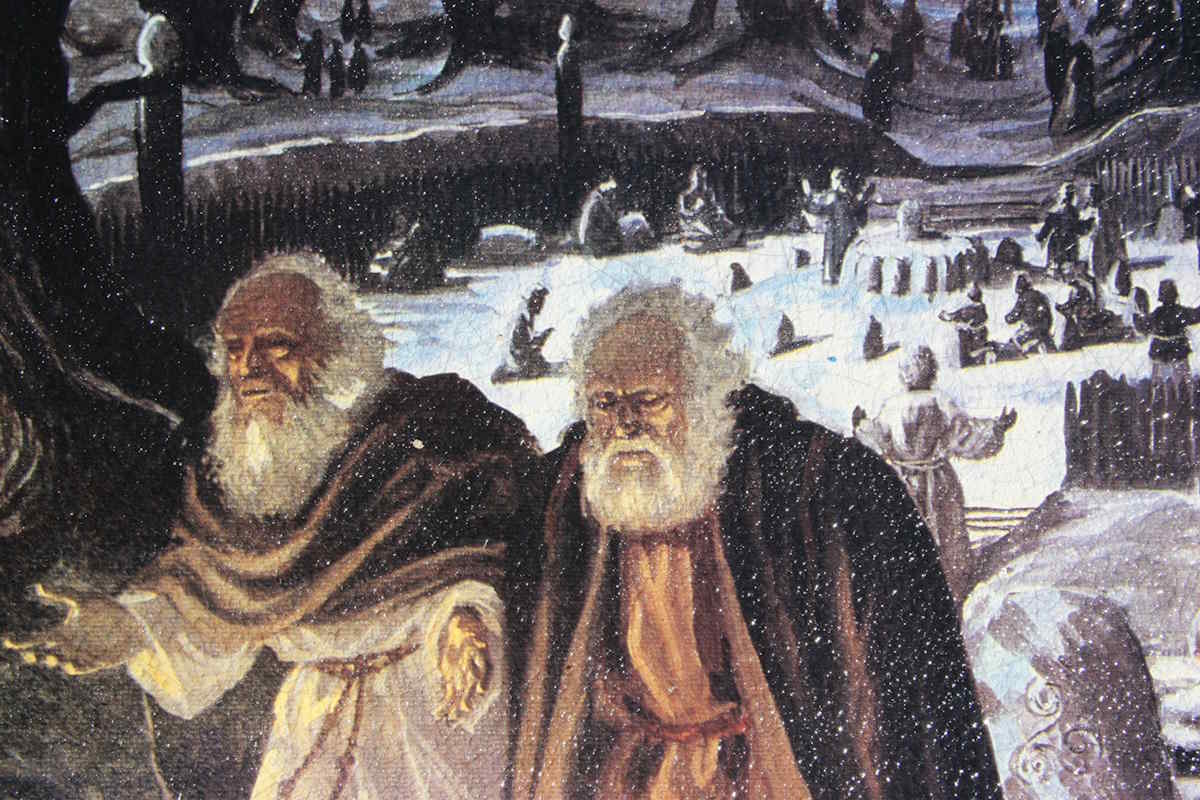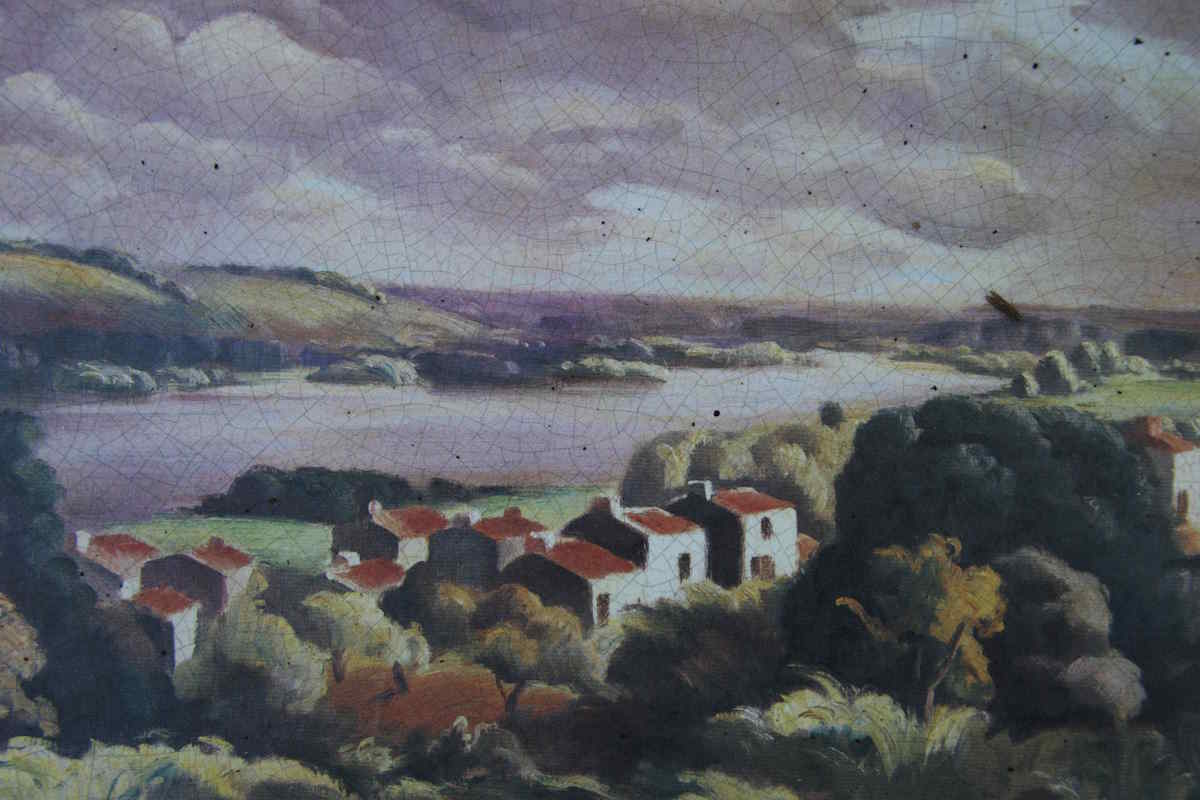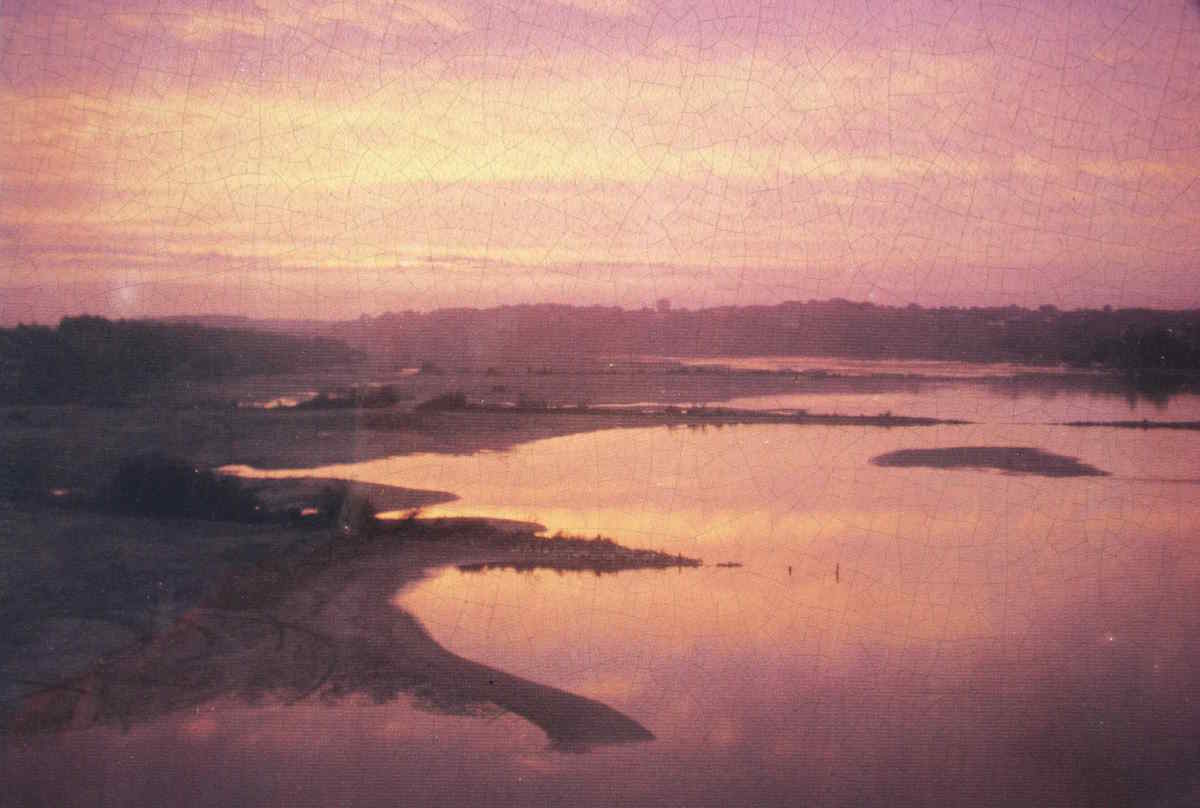|
A
little look at the Ancient History of Champtoceaux. |
|

The Druids
 In
the time of the Gauls, Champtoceaux was called Uxellos (The Hilltop) and was
made up in part of the people knpown as Pictons. Its capital was Poitiers (Limonium).
Since it was a long way from the capital, Uxellos was a major district, an
important township or Pagus. It's importance coming from its fortifications, its
port, and its toll bridge. It had therefore, its druids, a sort of magistrates
or high priests. The druids had very specific ideas of what constituted a deity
and were reluctant to give it a human form. They had the forest for a temple,
the forest itself was considered divine with sacred oaks as columns. It is in
our western regions that the druid religion survived the longest. Ancient Pliny
gives us the description of the ceremny the collection of the sacred mistletoe
from the oak trees the sixth day of the month, with the high priest dressed in
white, the golden sickle for cutting down the mistletoe. In
the time of the Gauls, Champtoceaux was called Uxellos (The Hilltop) and was
made up in part of the people knpown as Pictons. Its capital was Poitiers (Limonium).
Since it was a long way from the capital, Uxellos was a major district, an
important township or Pagus. It's importance coming from its fortifications, its
port, and its toll bridge. It had therefore, its druids, a sort of magistrates
or high priests. The druids had very specific ideas of what constituted a deity
and were reluctant to give it a human form. They had the forest for a temple,
the forest itself was considered divine with sacred oaks as columns. It is in
our western regions that the druid religion survived the longest. Ancient Pliny
gives us the description of the ceremny the collection of the sacred mistletoe
from the oak trees the sixth day of the month, with the high priest dressed in
white, the golden sickle for cutting down the mistletoe.
|
|

A Reversed
Spring.
In Ancient
times the springs and
fountains were equally revered. It was from the springs that the thousands of
sanctuaries that covered the Gaul countryside originated. The goodness of their
waters was sought and half lf all religious devotions take place near to
fountains such as Bellefontaine, Clairefontaine, Fonteney.
The spring at La Luce was reputed to
heal eye problems.
|
|

The Loire
 You
need to travel through the Valley of the Loire on a beautiful summer day. The
water hardly seems to move as it sweeps along its course. The large islands
which float on the lazy water. The river as well as the countryside it passes,
bathed in a tranquil yet powerful light. Then everything pales, the golden sand
(The colour of lightly sun-tanned skin). the silver of the pop;ars and willows,
the deep blue of the sky, all form a sight of peace and majesty. You feel a
sense of calm and you don't want to do anything but stretch out on the golden
sand after bathing in the warm water. If you are lucky there will be a nice west
wind, then you can see how clouds are formed and how they gather and move, and
you will understand the meaning of heaven. You
need to travel through the Valley of the Loire on a beautiful summer day. The
water hardly seems to move as it sweeps along its course. The large islands
which float on the lazy water. The river as well as the countryside it passes,
bathed in a tranquil yet powerful light. Then everything pales, the golden sand
(The colour of lightly sun-tanned skin). the silver of the pop;ars and willows,
the deep blue of the sky, all form a sight of peace and majesty. You feel a
sense of calm and you don't want to do anything but stretch out on the golden
sand after bathing in the warm water. If you are lucky there will be a nice west
wind, then you can see how clouds are formed and how they gather and move, and
you will understand the meaning of heaven.
Then the
landscape comes to life; the surface of the Loire shivers; each cloud has a
shadow that runs, each shadow had its cloud that hovers; the silver of the
upturned willow leaves, the greens brighten and darken in turn,, images now
violet, now gold as you move along the sandbanks, the sight of a manor house
appearing and then disappearing in amongst the hillsides.
And all to often the day ends with a
rain shower. But by then you will already be since gone
GASTON VAUDOU
(Discussion session made in Lausanne during the war
|
|

The Sun
 This
part of the flow of the river ends at the "Champalud". Luke in Greek means the
birth of dawn. In Latin Lux, Lucis, means daybreak. Lug the Gaul God personified
fire and light. He was highly esteemed as a deity. Tentates and Lug were the
same gods worshipped under different names. It is Plausible, then, that at the
time of an indeoendant Gaul, "Les-Hauts-de-la Luce",the slopes of "Champalud"
was a sacred wood with at fountain when the flow of water descending from the
Loire was high. At its summit, in fact, the "Coutee de la Luce" is orientated
exactly towards the point on the horizon where the summer solstice sun rises,
Sun worship dates back to the origins of ancient religions and the large sun
festivls. The festival of light took place at the summer solstice,
June 23rd. Our fires of St. Jean are a throw back to this. This
part of the flow of the river ends at the "Champalud". Luke in Greek means the
birth of dawn. In Latin Lux, Lucis, means daybreak. Lug the Gaul God personified
fire and light. He was highly esteemed as a deity. Tentates and Lug were the
same gods worshipped under different names. It is Plausible, then, that at the
time of an indeoendant Gaul, "Les-Hauts-de-la Luce",the slopes of "Champalud"
was a sacred wood with at fountain when the flow of water descending from the
Loire was high. At its summit, in fact, the "Coutee de la Luce" is orientated
exactly towards the point on the horizon where the summer solstice sun rises,
Sun worship dates back to the origins of ancient religions and the large sun
festivls. The festival of light took place at the summer solstice,
June 23rd. Our fires of St. Jean are a throw back to this.
|
|